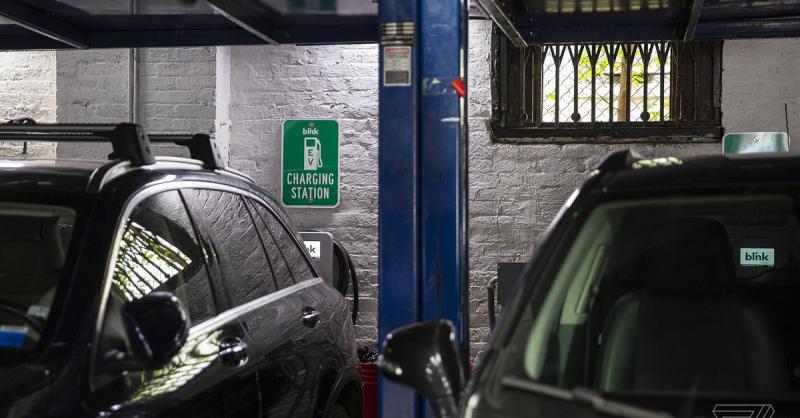Charging your EV at night is about to become more expensive
By: Andrew J. Hawkins (The Verge)


Yep, the alternatives of solar and wind power are less reliable at night. There aren't a lot of options to overcome this problem. EV owners will either need a second battery to recharge their vehicles at night or we continue to rely on fossil fuel generation for nighttime charging. Of course people could just buy two EVs so that one can charge while the other is in use. We'd end up turning two car households into four car households.
All these discussions are about costs and money. But money cannot buy sunshine. Money cannot buy wind. So, the all-electric future that is being hyped has been focusing on the wrong measure. We really need to think this through or it will turn into another crisis.

One of the perks of electric vehicle ownership is charging your car overnight while parked in your driveway at home. Electricity demand is usually low, so rates are fairly cheap, making it both convenient and affordable for many people. But that's about to change as more people buy EVs and the demand for overnight charging begins to rise, according to a new study published today.
The study, which was conducted by a team at Stanford University and published in Nature Energy, found that increasing EV ownership in the western US could lead to peak net electricity demand increases by up to 25 percent by 2035, the year California has said it would ban the sale of gas-powered cars and trucks.
increasing EV ownership in the western US could lead to peak net electricity demand increases by up to 25 percent by 2035
That demand could rise to as much as 50 percent under a "stress test" scenario where every vehicle on the road is a plug-in model, the team concludes. More demand translates into higher prices, which means the glory days of cheap overnight charging may be coming to an end.
To better prepare for a future with more EVs, the study's authors recommend vehicle owners do more daytime charging, either at work or at public charging stations. This becomes especially important as more renewable sources of power generation come online, including solar and wind power.
"In the future grid with higher renewable generation, timing is more important and net demand tells a very different story than total demand," the study reads. "Shifting drivers from home to daytime charging improves all metrics of grid impact including ramping, use of non-fossil fuel generation, storage requirements, and emissions. This insight is robust across varying levels of EV adoption."
To be sure, this is not just a California problem, even though the state has the highest number of registered EVs on the road today — around 1 million plug-in models, or about 6 percent of total vehicles.
"All states may need to rethink electricity pricing structures as their EV charging needs increase and their grid changes," said Siobhan Powell, lead author of the study, in an email.
Getting more drivers in the US to switch to plug-in power is seen as crucial in reducing pollution, reducing carbon emissions, and fighting climate change. But many challenges lie ahead. EVs are more expensive than gas-powered models and, for now, harder to find. The charging infrastructure in the US is unreliable and seen as a barrier to broader adoption of EVs. And the materials that are needed for lithium-ion batteries are in high demand, leading to supply chain problems.
The Biden administration has identified charging as a unique challenge, funneling billions of dollars into projects across the country to install more chargers, including DC fast chargers that can charge an EV in much less time than typical Level 2 chargers. Much less focus has been put on proper grid management, which will become more of an issue as EV sales continue to go up.
Demand charges from utility companies, for example, tend to dominate charging companies' operating costs, further complicating the business case for building more charging stations. The total cost of electricity is higher based on the level of charging they provide. These calculations need to be rethought if the government wants to incentivize the EV charging industry.








Based on my current average electricity consumption (average of 160 Kwh/month), driving an EV 18 mile per day would double my electricity consumption. If I don't drive anywhere on weekends then I could drive 25 mile per day during the work week. Doubling my current average electricity consumption would allow be to drive an EV 500 miles in a month (less if I use fast chargers).
Yeah, I might be able to save a little money. But money cannot buy sunshine. Money cannot buy wind.
Northern Hemisphere winter coming soon
Everyone only wants to talk about money. This is turning into a slow motion train wreck for fun & profit.
Or you could get one of these .....
Or, I imagine you could build your own for less...
Only the wealthy can afford EV's
How do you drive an EV while it is charging? And if an EV can be charged while it is being driven then what's the point of a battery?
All these solar powered charging stations look gee whiz. But the speed of the charge determines the size of the solar panel needed. Current EVs consume about 0.3 Kwh of electricity for every mile driven. If an EV consumes 30 Kwh to drive 100 miles then it will require 30 Kwh of electricity to recharge the battery. A 5 Kw charging station can only deliver 5 Kw per hour, at most. And the capacity of the solar panel determines how long it takes to recharge.
(The panel in the photo looks like it's probably a 5-6 Kw system. Each of the panels in the grid of 20 should generate 300 watts. And home systems of that size generate 15 to 20 Kwh of electricity per day. So, the charging station in the photo should generate enough electricity in a day to drive 50 to 60 miles.)
The Nissan Leaf is reported to have a 40 Kwh battery with a range of 168 miles. That means the Leaf consumes 0.24 Kwh per mile (40/168). To recharge that battery in 1 hour would require 40 Kwh which, theoretically, would require 8 times the size of solar panel than shown in the picture. An 8 times larger solar array would allow a half charge (84 miles of range) in 30 minutes.
But in reality solar panels are not that efficient because of varying weather conditions and varying exposure to the sun. Note the solar charger shown in the picture does not track the sun to maximize efficiency. That's why a 5 Kw home solar installation generates less than half of the theoretical generating capacity of the system. Theoretically a 5 Kw solar installation would generate 40 Kwh in 8 hours but the reality is that the system generates half that amount.
Right now the range of the vehicle affects efficiency. Greater range will require a larger and heavier battery which requires more Kwh per mile to move the heavier vehicle. The Hummer EV has a 210 Kwh battery with a range of 350 mile which means the consumption is 0.6 Kwh per mile (210/350). To fully recharge a Hummer EV in 1 hour would require 40 times the size of solar panel shown in the photo; assuming theoretical capacity of the charger.
My neighbor only charges his Nissan leaf about once a week or so. The charger pictured here would be perfect for his needs.
And then we have the State of Washington which is the worst place on the North American Continent for solar energy, we have no solar subsidies for conversion like most other states have because it is less efficient that the hydro and gas fired power plants we have.... Wind power also has the same issue in this state...
What do we do? Change our continental geography?
It doesn't matter to the whacko environmental crowd... And our goveneuer announced that he is mandating that our state be all electric by 2035 the same as Kalifornia with the same ban on fuel vehicles....
This is why we need to win the next few election cycles to stop the crazies from destroying our nation with their fantasies...